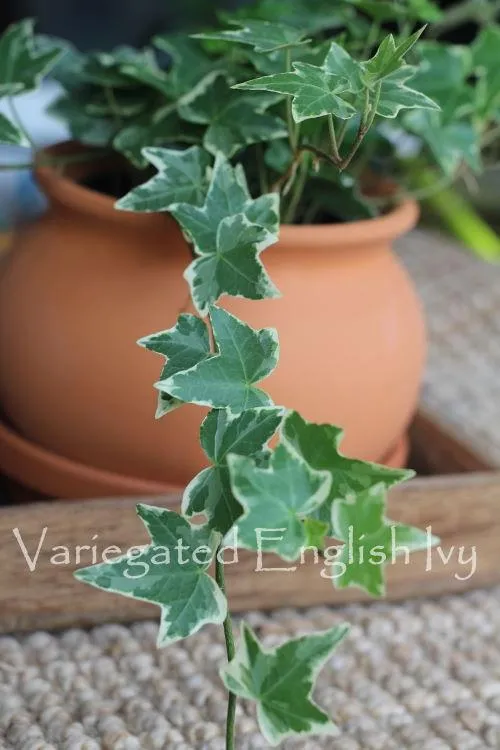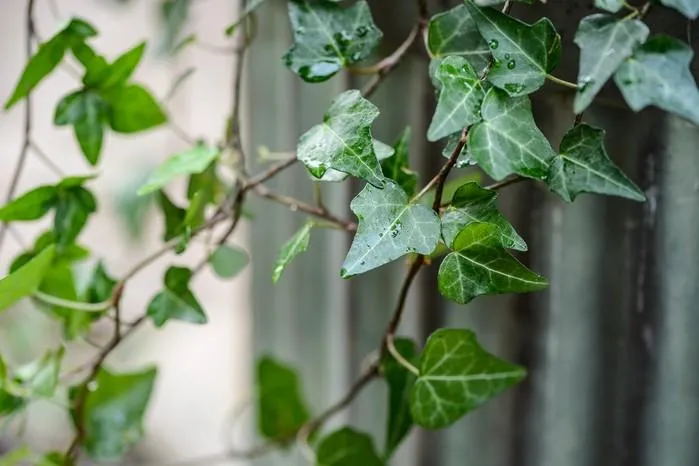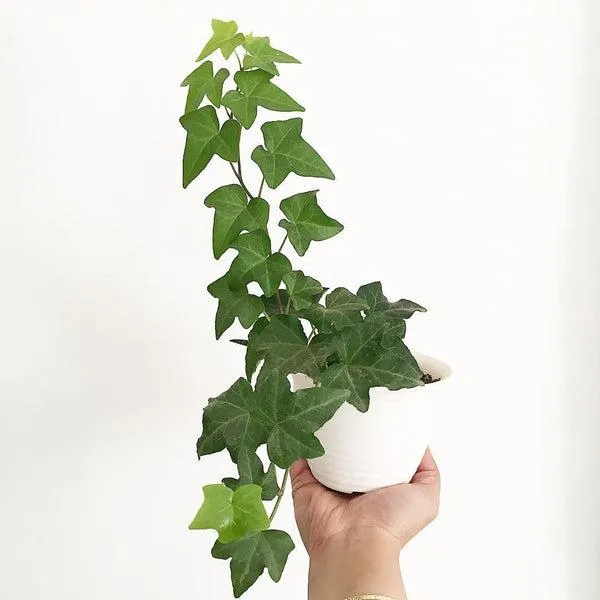A Comprehensive Guide to Watering English Ivy
English ivy is a popular creeping vine grown both indoors and outdoors for its attractive foliage and versatility. However, keeping this versatile plant healthy requires providing the right amount of water. As an ivy owner myself, I’ve faced situations where underwatering or overwatering caused leaves to drop. In this article, I’ll explore the various questions a gardener might have about watering english ivy based on my own experience.
How Much Water Does English Ivy Need?
- Outdoor ivy: The amount of water outdoor ivy needs depends on factors like soil type and climate. As a general rule, english ivy grown outdoors in fertile, well-draining soil needs regular watering when the top few inches of soil are dry. Water until the soil is moistened a few inches deep.
- Indoor ivy: Indoor ivy tends to dry out faster than outdoor varieties due to lower humidity levels. During the spring and summer, water indoor ivy when the topsoil becomes lightly dry to the touch. During fall and winter, cut back watering frequency to when the top inch of soil is dry.
Pro Tip: Feel the soil with your fingers to check moisture levels rather than relying on a pre-set watering schedule. English ivy can tolerate brief periods of dry soil between waterings. Surface-dry soil does not necessarily mean the ivy needs water.
When Should I Water Outdoor English Ivy?
The best time to water outdoor english ivy is in the morning. Watering in the morning allows leaf and stem surfaces time to dry out before nightfall, decreasing the risk of fungal diseases like powdery mildew. During midday, a significant amount of water can be lost to evaporation before being absorbed by the soil. Nighttime watering is also not recommended, as saturated foliage overnight provides ideal conditions for pathogens.
Basically, aim to water outdoor english ivy either very early in the day or later in the evening to avoid excess evaporation. Water at ground level to prevent wetting foliage. From my experience, early morning is better as it prevents any excess moisture lingering on leaves overnight.
How Should I Water indoor English Ivy?
There are a few effective ways to water indoor english ivy depending on your setup:
- For ivy grown in pots, water thoroughly by placing the entire pot in a bucket or sink of water. Allow it to soak until water drains freely from the drainage holes. This ensures thorough, uniform moisture distribution.
- For hanging baskets or topiaries, water from below by setting the planter in a waterproof tray filled with water. Let it soak for 10-15 minutes before discarding excess water.
- For ivy growing in containers without drainage holes, water sparingly and discard any excess standing in the saucer to prevent root rot from soaked soil.
Kind of like outdoors, it’s best to water indoor ivy in the morning so leaves have time to dry out before nightfall. Water only when the topsoil feels dry to minimize disease risk. Avoid overhead watering which can cause leaf drop.
What Should I Do If My Ivy Gets Underwatered?
Here are some signs your english ivy may be underwatered:
– Wilted or limp foliage
– Yellowing or brown edges on leaves
– Premature leaf drop
– Shrivelled, puckered leaves
– Poor growth

If your ivy is showing these symptoms, it’s time to up the water intake! Gradually increase water amounts over a few days until the soil is consistently moist. Snip off any shriveled or discolored foliage to encourage new growth. You can also place the pot on a pebble tray filled with water to boost humidity levels. With regular waterings tailored to your soil conditions, the ivy should perk back up in no time.
On the other hand, resuming normal watering after a brief dry spell is usually sufficient to revive underwatered ivy without drastic measures. Babying thirsty plants with TLC can go a long way.
What Should I Do If My ivy Gets Overwatered?
Telltale signs of overwatering in english ivy include:
– Soft, yellowing, or mushy brown roots
– Drooping, limp foliage
– Yellow or discolored leaves dropping off
– Soggy, darkened soil that feels wet days after watering
Yikes, so basically the opposite of underwatering! If your ivy displays these symptoms, it’s suffering from soggy overwatered soil.
To remedy this, take action quickly by removing the plant from its pot and checking root condition. Trim any mushy brown roots with sterile shears. Repot in fresh, well-draining potting mix and place in a brightly lit spot with good air circulation to dry out. Going forward, tamp down the water frequency – when in doubt, wait an extra day before watering again. Proper drainage is key to avoiding root rot from overwatering.
It may take a few weeks for the ivy to bounce back fully. Have patience and don’t overcompensate by underwatering. With luck and a little TLC, your previously overwatered ivy should thrive once more. The solution lies in finding a happy medium watering rhythm.
My Ivy Doesn’t Look Very Happy. Any Other Care Tips?
A few additional tips that may help perk up an unhappy english ivy:

– Fertilize monthly in spring and summer with a dilute, balanced houseplant fertilizer to boost growth. Flush with plain water between feedings.
– Move the plant to a brighter spot if leaves look pale or leggy. Ivy thrives in medium to bright, indirect sunlight.
– Check for pests and treat immediately if you spot signs of infestation like webbing, poop stains or crawling insects. Commonly invasive houseplant pests include spider mites, scale and mealybugs.
– Repot only when roots have filled the container. English ivy tolerates being slightly pot-bound.
– Prune to remove any dead or diseased growth and shape dense vines. Cuttings can be rooted for new plants.
– Dust leaves weekly with a soft brush or wipe down monthly with a damp cloth to remove dust buildup.
– Humidify the air for indoor varieties with a pebble tray, diffuser or occasional misting.
With a bit of trial and error tweaking this generic care routine, your ivy is sure to look stunning once more! Proper watering is key, but other factors like light, pests and pruning all contribute to keeping ivy in tip-top shape.

I hope you found this comprehensive guide on watering english ivy helpful in addressing your plant care questions! Please post below if any other issues arise. Wishing you a green thumb and many years of enjoyable success with this versatile houseplant.
English Ivy Watering Guidelines
| Soil Moisture Level | Watering Frequency |
|---|---|
| Very Dry | Water every 2-3 days |
| Moderately Dry | Water every 4-5 days |
| Slightly Dry | Water every 6-7 days |
| Moist | Water when top 1 inch of soil is dry |
| Wet | Do not water until soil is slightly dry |
| Time of Year | Water less frequently in fall/winter |
FAQ
-
How often should I water my english ivy?
English ivy needs water on a regular basis, but not a ton at once. Basically, water when the top inch or two of soil looks dry. About once every 5-7 days should do the trick. On the other hand, too much can kill it, so don’t go overboard!
-
What’s the best time of day to water?
Most plants like morning watering best. The reason is that the moisture has all day and night to soak into the soil and leaves before drying out from the sun. Watering in the evening can leave moist leaves overnight, which could cause disease issues. So aim for early-ish in the am.
-
Should I fertilize my ivy?
Fertilizing isn’t completely necessary but can help your ivy grow lusher and greener. Kind of like potato chips – a little is ok, but too much isn’t good. I’d go with a diluted liquid fertilizer monthly from spring to fall. Perhaps cut back in the winter when growth slows. Too much food can harm it, so take it easy.
-
What if it’s not getting enough light?
English ivy does fine in low light but will grow faster with more sun. If yours looks pale or leggy, try moving it to a spot with brighter light. However, be careful not to shock it with too much sun all at once. Ease it into the new location for best results. It may also need a trim to shape if it’s stretching too much.
-
Why are the leaves turning yellow?
Yellow leaves can mean a few things for ivy – too much or too little water, too much sun, or not enough nutrients due to lack of feeding. Check the soil moisture and drainage. Improving light or fertilizing may help. Possibly the leaves are just old ones dying off naturally too. If the problem spreads, it could be disease and you’d want to remove affected parts.
-
My ivy is growing like crazy – what now?
Sounds like you’re doing something right if your ivy is thriving! At this point, pruning or training the vines is a good idea. Cut back long runners to maintain the shape you want. Use clips or ties to guide new growth where it looks best. Propagating cuttings for more plants is fun too. Just peel off sections with a node and root them in water or soil. Pretty soon you may have too much ivy – what a problem to have!
-
The leaves are crunchy and brown – uh oh!
Crunchy brown leaves are never a good sign. It’s possible your ivy has become dehydrated in very dry conditions. Make sure the soil is always somewhat moist, not soaked. Pests could also be the cause – check for signs of insects like scales or spider mites. As a last resort, the plant may have a disease. Remove any unhealthy foliage so it doesn’t spread. With care it can hopefully bounce back.

